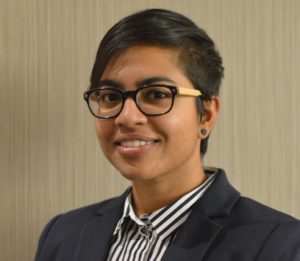Dr. Michael Smith accepting the Nobel Prize in Chemistry in 1993.
In 1976, a couple of biochemists brainstormed over coffee at a University of Cambridge cafeteria. Dr. Michael Smith thought out loud, ideas sparking from his 20 years of experience studying the chemical synthesis of oligonucleotides, the elementary units of DNA and RNA. Smith was spending a sabbatical year in the laboratory of double Nobel Prize winner, Dr. Fred Sanger, in the very institute where Watson and Crick had first described DNA’s double helix structure. Together with Dr. Clyde Hutchison, Smith was working on sequencing the genetic code of an Escherichia coli bacteriophage to study mutation phenomena.
Dr. Smith had an interesting hypothesis. Living things store their genetic information in the form of DNA, which through the process of transcription and translation, produce amino acids, the building blocks of proteins. So, theoretically, by creating specific, targeted changes to the DNA, the resulting protein end-product could be altered in a highly controlled manner. Up until then, studying DNA alterations, or mutations, required the use of chemical or radiation-based mutagens, producing random changes to the sequence. Site-directed mutagenesis, the technique first described by Smith and Hutchison in 1978, finally gave researchers a tool to study the impact of a single mutant gene on an organism.
Little did Smith know then that his idea would go on to completely transform molecular biology. Smith dedicated his entire scientific career to fine-tuning the process of site-directed mutagenesis, paving the way for its countless applications in everything from cancer diagnostics to enhanced crops for agriculture.
The road to Smith’s tremendous finding was not without struggles that most aspiring scientists can relate to. Young Michael Smith faced several disappointments in his early academic career, such as getting rejected by Oxford and Cambridge universities (due to his poor Latin skills) and scraping by with less-than-perfect scores. Still, he persevered and with a doctorate degree in Chemistry from the University of Manchester, moved to Vancouver in 1956. The enthusiastic Postdoctoral Fellow and father of three joined the laboratory of future Nobel Prize recipient, Professor Gobind Khorana, at the University of British Columbia. This marked the start of his lifelong journey in the world of synthetic biomolecules.
As with many revolutionary discoveries, Smith’s work was not readily embraced by his scientific peers. His initial submission describing site-directed mutagenesis in an article to a leading scientific journal, Cell, was dismissed by the editors. The reply: “Not of general interest”. At the bench, Smith’s experiments often produced unexpected results or led to dead ends. Never admitting defeat, the self-professed workaholic fervently soldiered on, using sometimes unconventional means to answer difficult questions. Musing on obstacles to his progress, he remarked, “In research you really have to love and be committed to your work because things have more of a chance of going wrong than right. But when things go right, there is nothing more exciting.”
In 1993, Smith received a scientist’s ultimate accolade, the Nobel Prize (a first for the province), which he shared with Dr. Kary Mullis, inventor of the polymerase chain reaction. He took 12 colleagues, a group of mostly graduate students and research assistants, to join him on an all-expenses paid trip to Stockholm to accept the award. Most remarkably, Smith later donated the entire cash award to Vancouver’s growing scientific community. Science World BC, the Society for Canadian Women in Science and Technology and schizophrenia research (a notoriously under-funded field at the time) were all rewarded by Smith’s philanthropic contributions. He was also instrumental in establishing a local genomics innovation hotspot through the creation of organizations such as Genome BC. In doing so, Smith became a champion for raising public awareness on the value of genomics and garnering substantial amounts of Federal government research funding.
The ripples of Smith’s altruism are still being felt today. As Dr. Bev Holmes, President & CEO of the Michael Smith Foundation for Health Research (MSFHR) notes, “By using his influence to advance research in the province, support women in research and engage the public in science, he laid the groundwork for a thriving research ecosystem in BC – something we are proud to continue.”
It has been 25 years since Smith received his momentous honour, and the research community in BC and beyond continue to celebrate the efforts of this brilliant innovator. “Mike really put Canada on the map in terms of scientific research but from working with him as a young faculty member I remember him as very humble, and very honest. He was a true scientist – he just loved science,” Dr. Brett Finlay, Professor of Microbiology at Michael Smith Laboratories remembers. In 2000, the community lost a truly extraordinary researcher, a caring mentor and a generous humanitarian. The wealth of knowledge he leaves behind, along with his commitment to research excellence, continues to inspire and excite the next generation of BC scientists.


